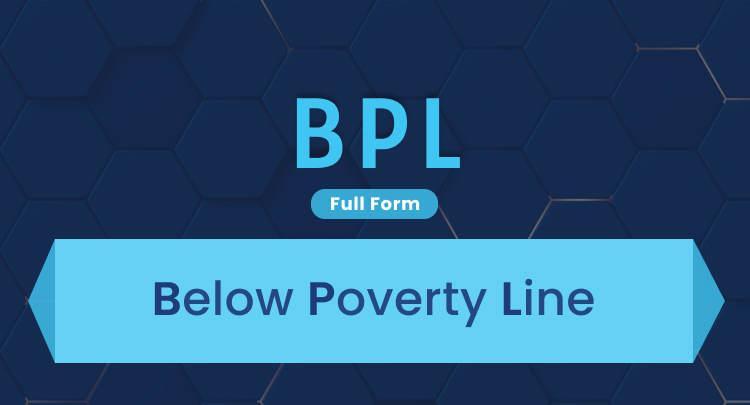BPL Full Form

Meaning of BPL (Below Poverty Line)
The full form of BPL is Below Poverty Line. India’s government has set this economic standard so it can identify the lower-income people in the community who need urgent assistance from the government. The government has placed an income limit. Individuals whose earnings fall below the limit are listed as BPL. According to a survey, about 25 to 30 per cent of the population of India is BPL.
History of BPL
- The task force of the planning commission, 1962, proposed a minimum amount of expenditure necessary to live as Rs. 20 per person in rural communities, and Rs. 25 per person in urban areas, with the exception of schooling and healthcare provided by the state government.
- After the 1970s the criterion was further modified for the lower BPL level as the daily minimum income of Rs. 49.1 and Rs. 56.7 for rural and urban areas, respectively.
- In 1993, the group of experts split the definition of aggregate poverty line into the definition of state level, in which the poverty line for each state was specified separately.
- The rate of poverty line in rural India reached Rs. 972 in 2012, and Rs. 1,407 in urban India. In that year, it was approximated that 29.5 per cent of the Indian population lived below the poverty line.
- In 2014, the Rangarajan Panel said that there were about 454 million people living in extreme poverty in the country comprising 38 percent of the population.
Criteria defining BPL
- House type
- Infant status
- Consumer durables
- Food Security
- Literacy status
- Landholding
- Sanitation
- Clothes, etc.
Causes of Poverty in India
- Population Explosion: Throughout the past 45 years, India's population has grown at a rate of 2.2% per year, which means almost 17 million people are added to the country’s population each year.
- Low Agricultural Productivity: Fragmented landholdings, lack of capital, illiteracy about the latest technologies in farming, the application of the traditional methods of cultivation, the wastage during storage, etc. have led to low agricultural productivity.
- Inefficient source utilization: Underemployment has also led to poverty.


